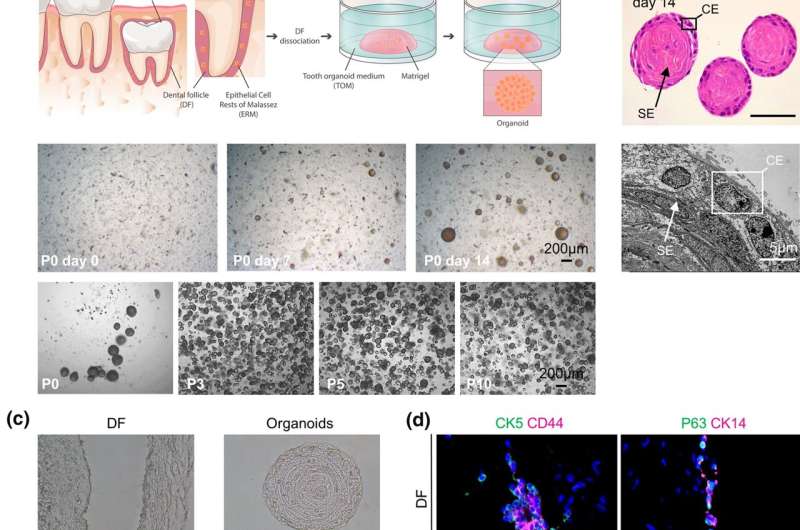Important step toward development of biological dental enamel

Currently, cavities and damage to enamel are repaired by dentists with the help of synthetic white filling materials. There is no natural alternative to this. But a new 3D model with human dental stem cells could change this in the future. The results of the research led by KU Leuven Professor Hugo Vankelecom and Professor Annelies Bronckaers from UHasselt have been published in Cellular and Molecular Life Sciences.
Our teeth are very important in everyday activities such as eating and speaking, as well as instrumental to our self-esteem and psychological well-being. There is relatively little known about human teeth. An important reason is that certain human dental stem cells, unlike those of rodents, are difficult to grow in the lab. That's why the KU Leuven team of Professor Hugo Vankelecom, in cooperation with UHasselt, developed a 3D research model with stem cells from the dental follicle, a membranous tissue surrounding unerupted human teeth.
"The advantage of this type of 3D model is that it reliably reproduces the stem cells' original properties. We can recreate a small piece of our body in the lab, so to speak, and use it as a research model," says Professor Vankelecom. "By using dental stem cells, we can develop other dental cells with this model, such as ameloblasts that are responsible for enamel formation."
Biological filling material
Each day, our teeth are exposed to acids and sugars from food that can cause damage to our enamel. Enamel cannot regenerate, which makes an intervention by the dentist necessary. The dentist has to fill any possible cavities with synthetic materials. "In our new model, we have managed to turn dental stem cells into ameloblasts that produce enamel components, which can eventually lead to biological enamel. That enamel could be used as a natural filling material to repair dental enamel, explains doctoral student Lara Hemeryck. "The advantage is that in this way, the physiology and function of the dental tissue is repaired naturally, while this is not the case for synthetic materials. Furthermore, there would be less risk of tooth necrosis, which can occur at the contact surface when using synthetic materials."
Impact in many sectors
Not only dentists would be able to help their patients with this biological filling material. The 3D cell model can have applications in other sectors as well. For example, it could help the food industry to examine the effect of particular food products on dental enamel, or toothpaste manufacturers to optimize protection and care. "In addition, we want to combine this model with other types of dental stem cells to develop still other tooth structures, and eventually an entire biological tooth. Now, we focused on ameloblasts, but our new model clearly opens up various possibilities for further research and countless applications," concludes Professor Vankelecom
More information: Lara Hemeryck et al, Organoids from human tooth showing epithelial stemness phenotype and differentiation potential, Cellular and Molecular Life Sciences (2022). DOI: 10.1007/s00018-022-04183-8





















